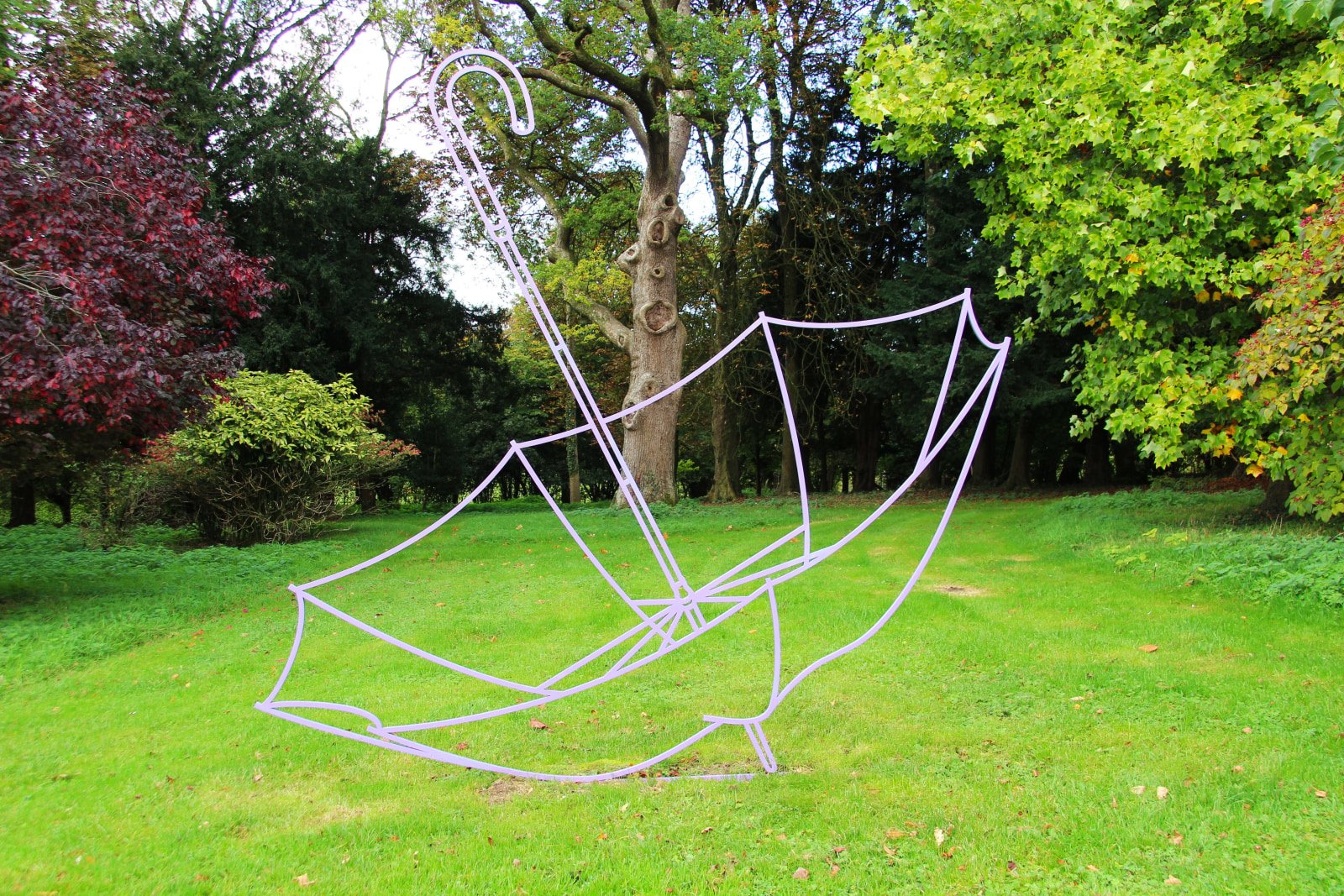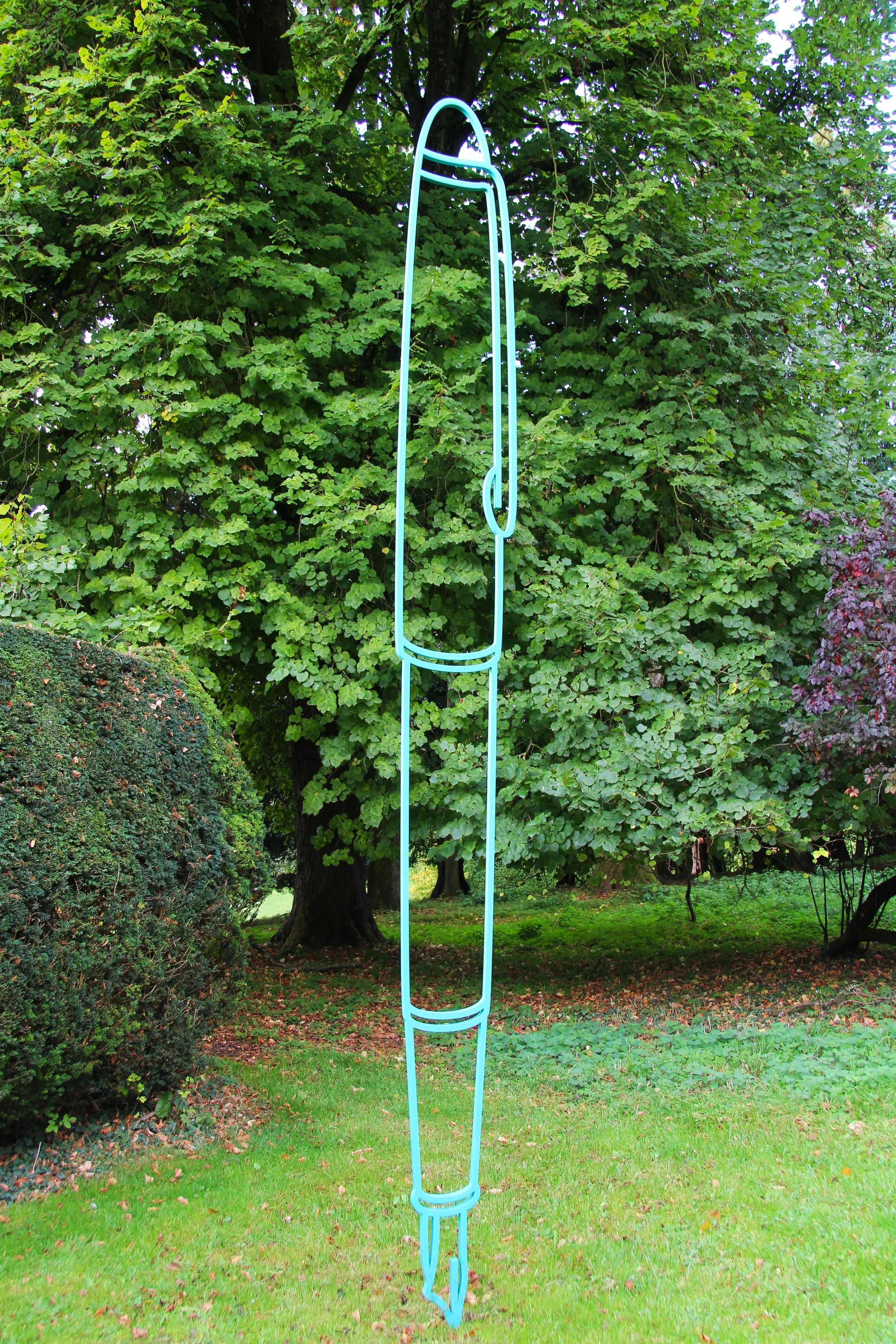WORK OF THE WEEK: Michael Craig-Martin, Umbrella, 2013
Michael Craig-Martin
Umbrella (purple), 2013
Powder-coated steel
327 x 310 x 2.1 cm
128 ¾ x 122 ¹⁄₁₆ x ¹³⁄₁₆ in.
‘Michael Craig-Martin has relentlessly explored the subtle balance between the artificial and the real.’
- Eckhard Schneider, Always Now, 1998
Michael Craig-Martin (b.1941) is a distinguished figure in the world of British conceptual art, concerned with the nature of representation and the role of the spectator. He attended Fordham University, New York, from 1959 to 1961, then Yale University, where he received a BA in 1963 and an MFA in 1966. Craig-Martin taught at Goldsmiths College School of Art, London, from 1974 to 1988 and from 1994 to 2000.
Made from powder-coated steel, Umbrella consists of one continuous line that does not break as it moves around the outline of the image. To achieve this, he takes a large, thin sheet of steel just over 2cm in thickness, and using a high-pressure water jet, he cuts out the image with meticulous precision.
Michael Craig-Martin
Fountain Pen (turquoise), 2019
Ed. 1 of 3 plus 1 AP
Powder-coated steel
400 x 42 x 2 cm
Either by grouping images of familiar objects we would never see together, or by placing his sculpture in an unfamiliar landscape, Michael Craig-Martin dislocates the prescribed meaning of these images from the artwork, encouraging the ‘crystallisation of thinking through the act of seeing’ (Schneider, 1998). Such is the case of Umbrella and Fountain Pen, which are situated in the grounds in front Roche Court. Contrasting with the soft brown and green hues behind them, they pop out with their signature bright colours, commanding the attention of the viewer. The pieces propel us into the uncanny. It is in this state that we might engage with Craig-Martin's works, they 'open up the minds of the viewers by allowing various meanings to emerge, and letting them play freely in the gap of the opening, and provide us with visual pleasures.' (Henna Joo, Word, Image, Desire, 2012)
Magritte's painting, The Treachery of Images (1929), more commonly referred to as ‘Ceci n'est pas une pipe’ (this is not a pipe) set into motion a discussion between reality, images and language, which Michael Craig-Martin has continued. The image of the pipe is merely a representation, it is not the pipe itself. In the same way, Michael Craig-Martin takes everyday objects, recognisable to us in an instant, and creates depictions of these objects through sculpture.


